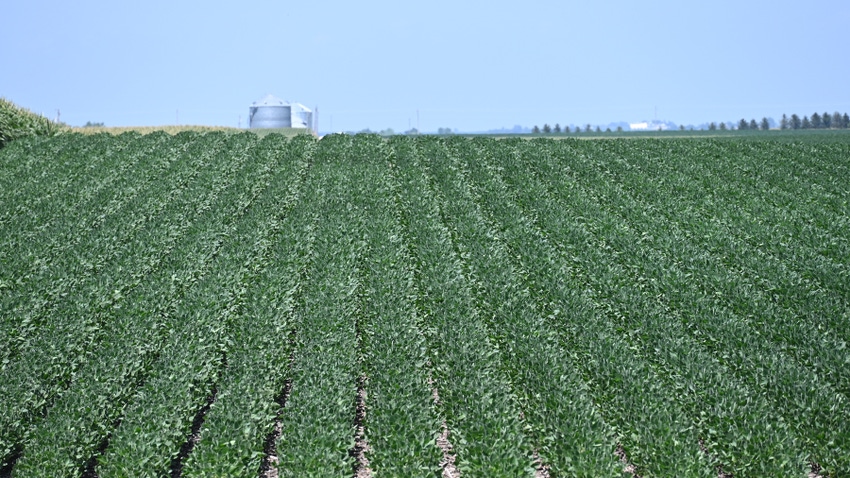February 17, 2023

The 2023 growing season is setting up to be another season with high input prices and commodity prices such that margins for farmers will be tight. Profitability is still attainable, but excess expenses will need to be trimmed to a minimum.
Farmers are realizing there are cost savings to be found by lowering soybean seeding rates with less risk to yield loss. However, not all farmers are convinced that the more traditional rate of 175,000 to 185,000 seeds per acre may be too high. And while there are times that higher seeding rates are necessary and should be considered, these are not absolutes.
University research across decades has shown that lowering planting populations to a certain degree will not have a detrimental effect on overall yield. Iowa State University recommends a soybean seeding rate of 125,000 to 140,000 seeds per acre as a baseline. This range is consistent with most universities across the Corn Belt, plus or minus about 15,000 seeds per acre to reach the agronomic optimal plant population density.
Agronomic optimal plant density is considered the lowest plant density that maximizes yield at harvest. Recommended seeding rates are higher than this to allow for plant attrition from germination, emergence and in-season issues and still reach the agronomic optimal plant population density. Recommended seeding rates are often about 25% higher than the agronomic optimal plant density at harvest.
Population and yield
Soybean yield increases with plant population density up to the optimal point at which the yield then plateaus or may begin to decrease with increasing population density. Light interaction and penetration into the canopy are key components to yield production in soybeans. Lower-than-optimal plant populations will reduce lodging risk but will change the physical characteristics of the soybean plants. Plants will have thicker stems, excessive branching and lower-setting pods, which can increase harvesting issues depending on equipment. The larger gaps between seeds at planting may result in higher attrition and lower stands in crusted soils — especially in narrow rows, where seed-to-seed spacing is increased.
Above-optimal agronomic plant densities may have better germination of seeds due to proximity and pressure of seeds in the environment and faster canopy closure. However, later in the season, these plants are tall and spindly, have greater lodging potential and can be more susceptible to environmental stressors such as drought. Soybeans always grow in the space provided to them, but this space does not always equal more yield potential.
The agronomic optimum plant population density can be variable across fields. This is where farmers can get hung up on the maximum yield vs. economics battle. Maximum soybean yields in a Midwest field have been achieved with agronomic optimal population densities at harvest as high as 190,000 plants per acre. However, greater than 95% of maximum yield has been achieved in agronomic optimal population densities as low at 100,000 plants per acre. Newer soybean genetics respond much better to lower populations, which allows for this variability to occur.
Soybean rate decision
So as a farmer, the decision about how dense to plant your soybeans comes down to other environmental risk factors and economics. If management decisions are such that you’re planting early into cold and wet soils, or you have a heavy cover crop density, deeper planting depth, variable soil conditions or uneven planting equipment, then a higher population may need to be considered to account for increased stand losses. Other stressors such as soybean cyst nematode, high weed pressure or iron deficiency chlorosis may also benefit from higher seeding rates.
Lowering seeding rates may be considered if you’re planting in warmer soils later in season, or you have higher-yielding-potential fields, seed treatments, or fungicides and insecticides.
The economic potential for seeding rates considers crop yield and seed cost. Analysis of the return on seed investment is a critical factor. This return-on-investment principle is when the last thousand seeds added to the rate increases the yield to pay for itself. It is the point where planting more seeds will not increase yield enough to pay the additional seed cost. While reducing seeding rates can help save on input costs, farmers should never reduce the seeding rate below the amount needed to produce the maximum economic yield.
Higher soybean populations are often considered by farmers to be an insurance policy investment. The “just in case” scenario is usually a deciding factor in seeding rates. No decision is made in a vacuum, so analyzing what the soybean plant will do and what individual fields or operations can handle is important to determining the savings on seed input costs. Going too low with population or having stand loss issues that cause yield loss is always a risk. However, with soybean populations, years of university and industry research and science can provide confidence that this management decision has a higher chance of success.
Witt is a field agronomist in west-central Iowa for Iowa State University Extension and Outreach.
About the Author(s)
You May Also Like






